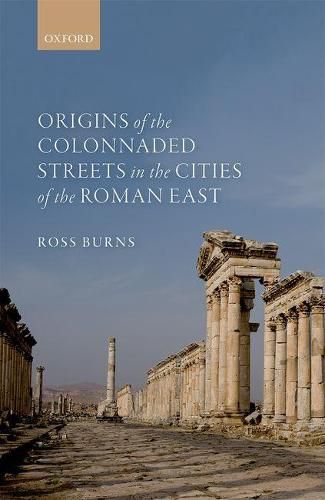Readings Newsletter
Become a Readings Member to make your shopping experience even easier.
Sign in or sign up for free!
You’re not far away from qualifying for FREE standard shipping within Australia
You’ve qualified for FREE standard shipping within Australia
The cart is loading…






The colonnaded axes define the visitor’s experience of many of the great cities of the Roman East. How did this extraordinarily bold tool of urban planning evolve? The street, instead of remaining a mundane passage, a convenient means of passing from one place to another, was in the course of little more than a century transformed in the Eastern provinces into a monumental landscape which could in one sweeping vision encompass the entire city. The colonnaded axes became the touchstone by which cities competed for status in the Eastern Empire. Though adopted as a sign of cities’ prosperity under the Pax Romana, they were not particularly ‘Roman’ in their origin. Rather, they reflected the inventiveness, fertility of ideas and the dynamic role of civic patronage in the Eastern provinces in the first two centuries under Rome.This study will concentrate on the convergence of ideas behind these great avenues, examining over fifty sites in an attempt to work out the sequence in which ideas developed across a variety of regions-from North Africa around to Asia Minor. It will look at the phenomenon in the context of the consolidation of Roman rule.
$9.00 standard shipping within Australia
FREE standard shipping within Australia for orders over $100.00
Express & International shipping calculated at checkout
The colonnaded axes define the visitor’s experience of many of the great cities of the Roman East. How did this extraordinarily bold tool of urban planning evolve? The street, instead of remaining a mundane passage, a convenient means of passing from one place to another, was in the course of little more than a century transformed in the Eastern provinces into a monumental landscape which could in one sweeping vision encompass the entire city. The colonnaded axes became the touchstone by which cities competed for status in the Eastern Empire. Though adopted as a sign of cities’ prosperity under the Pax Romana, they were not particularly ‘Roman’ in their origin. Rather, they reflected the inventiveness, fertility of ideas and the dynamic role of civic patronage in the Eastern provinces in the first two centuries under Rome.This study will concentrate on the convergence of ideas behind these great avenues, examining over fifty sites in an attempt to work out the sequence in which ideas developed across a variety of regions-from North Africa around to Asia Minor. It will look at the phenomenon in the context of the consolidation of Roman rule.